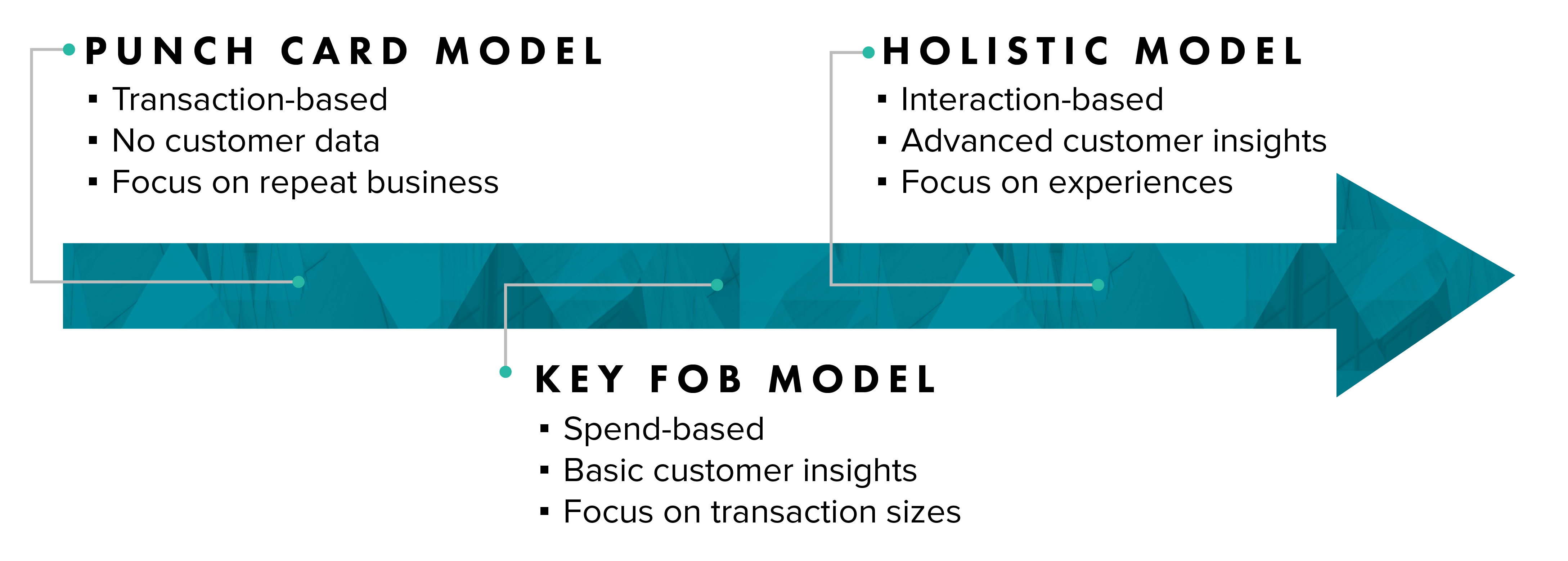Evolution of the Retail Loyalty Rewards Program
Loyalty rewards programs have undergone an immense transformation over the last 20 years. The evolution of these programs happened relatively quickly. From the original punch card (buy 10, get 1 free!), to a drawer full of wallet-sized membership cards, then the downsized version which fit on our keychains. Now, most of those physical cards have migrated to our phones or to a virtual lookup using a unique ID like your phone number or email address. However, as much as the physical form of the loyalty card has changed, the goals and benefits of loyalty rewards programs have undergone an even more dramatic transformation.
How Loyalty Rewards Programs have Evolved
Early on, retailers sought to simply get a customer back in the store by giving away something free without learning anything more about the individual. The punch card model met the goal of getting the customers to return to earn a stamp and work towards their free gift. With the advent of membership cards combined with unique ID numbers, retailers got the added benefit of data on its most loyal of customers, including personal information and spending habits. We, as customers, in exchange for handing over our addresses and personal info, started receiving coupons in the mail or at the register and perhaps some exclusive “member only” benefits. In the key fob model, the platform to earn points emerged and retailers could reward their customers based on visits and dollars spent. We still see this approach working well for many retailers, but as we move forward in the era of personalization and a highly competitive retail landscape, is it enough? A well-designed loyalty program can (and should) be broader than a simple point-spend model, and industry leaders are proving this can be a differentiator in the market today.

The Amazon Prime Approach
When talking loyalty, we look to the industry leaders and ask: what are Amazon and Walmart doing? Amazon Prime isn’t your traditional loyalty rewards program since there is a $119/year price tag associated with membership. With that price tag, and no point earning program or added benefits for top spenders, why does Amazon now boast over 100 million Prime members? Prime sets the pace because of everything else that it does: free two-day shipping (or better), exclusive deals, free video streaming, and even free books and games. Just like the company itself, Amazon Prime is a sprawling program that looks to reward its members with a wide variety of benefits, rather than just give a flat percent back via a points balance. Amazon’s goal is to get customers to invest in their ecosystem by being a one-stop shop, and Prime reflects this strategy with an unparalleled menu of offerings to its members.
The Walmart Approach
Walmart sits on the opposite end of the spectrum, with a little-publicized rewards loyalty program available only to shoppers with Walmart-branded payment methods and rewards in the form of statement credits as a flat percent back on various spend categories. Looking to compete on price, Walmart emphasizes their position with this program by looking to put money back into their customers’ pockets. It is useful to look at both sides of the loyalty rewards program spectrum by watching Amazon and Walmart, however, each retailer needs to build something applicable for their shoppers to be successful.
The Future: Holistic Loyalty Rewards Programs
For most retailers, a holistic loyalty rewards model is the next evolution for customer loyalty programs. A program that offers unique experiences for their best customers which are delivered in innovative ways can appeal to shoppers across multiple value drivers. Retailers can get caught up in the benefits they will see from implementing a strong loyalty program – from more insightful customer data, increased customer retention, more repeat visits, and higher cart values – but it is critical that retailers don’t forget to focus on the customer when designing their rewards programs.
Co-authors and contributions by Kelsey Sharp and Jenny McLean



